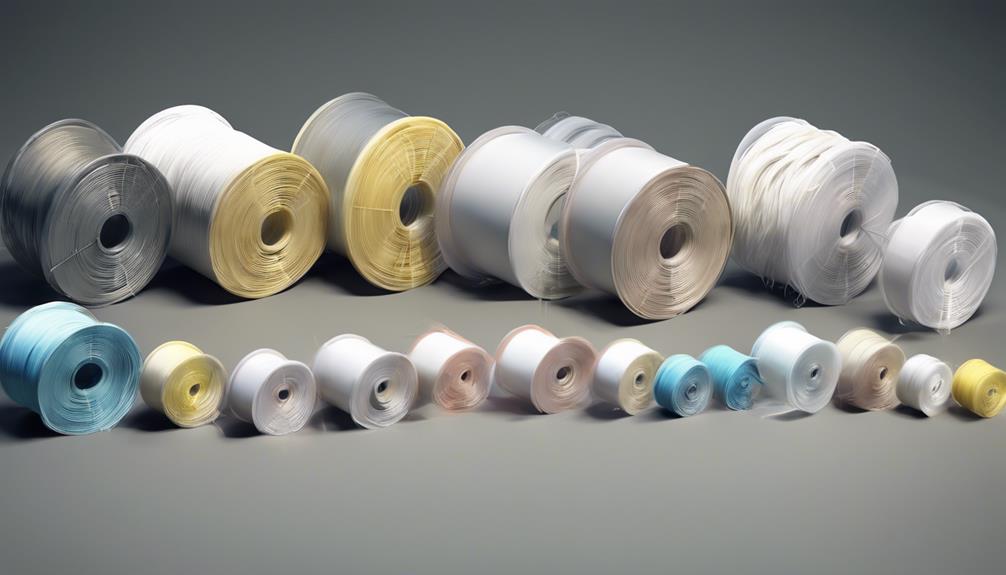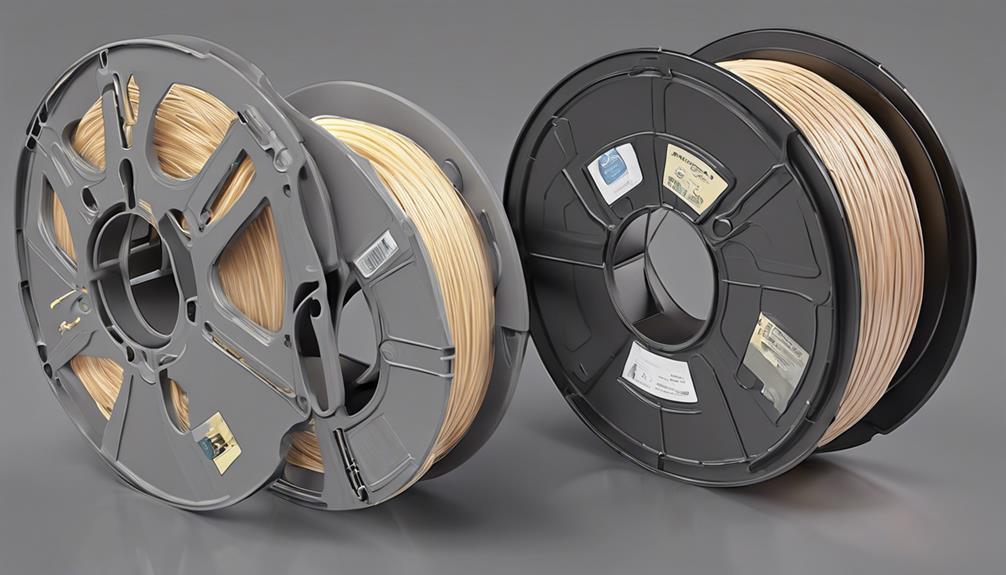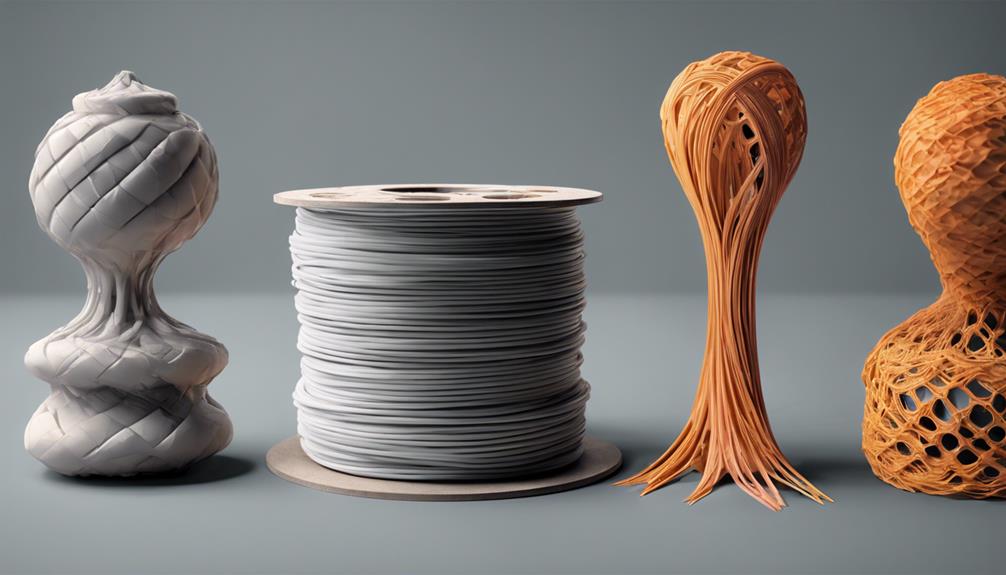Did you know that the choice of filament diameter in 3D printing can have a substantial impact on the quality of your prints? Understanding the nuances between 3mm and 1.75mm filaments is crucial to optimizing your printing experience. As you navigate the world of 3D printing, uncovering the mysteries behind filament diameters will empower you to make informed decisions that ultimately enhance your printing outcomes.
Evolution of Filament Sizes in 3D Printing

The evolution of filament sizes in 3D printing has been influenced by historical practices and technological advancements, leading to a shift from 3mm filament to the popularization of 1.75mm filament standards.
Initially, 3mm filament was widely used due to historical reasons and legacy machines. However, with the RepRap project's optimization efforts, 1.75mm filament gained popularity for its benefits. Manufacturers now offer both sizes to cater to various needs, but 1.75mm filament has become the standard choice within the 3D printing community.
This shift was driven by considerations such as extrusion capabilities, where the smaller diameter provided advantages for precision and flexibility throughout the printing process.
Pros and Cons of 3mm Filament
With the evolution of filament sizes in 3D printing shifting towards the standardization of 1.75mm filament, understanding the pros and cons of 3mm filament is essential for making informed printing decisions.
3mm filament has advantages like absorbing less moisture, enabling increased extruding flow with wider nozzles, being suitable for vase mode, and offering compatibility with Bowden systems. However, it tends to be more expensive, suffers from increased oozing at the start of prints, has lower dimensional accuracy, presents challenges with retraction parameters, and can create high pressure in hotends with very small nozzles.
Consider these factors when deciding between 3mm and 1.75mm filament for your 3D printing projects.
Considerations for Filament Compatibility

Taking filament compatibility into account when 3D printing involves evaluating the diameter specifications and potential risks of using incorrect sizes. Using the wrong filament diameter can lead to extrusion issues, clogs, and even damage to your printer's extruder and nozzle. Make sure that the filament size matches your printer's specifications to avoid these complications.
Conversion between 3mm and 1.75mm filament sizes is possible, but adjustments may be necessary to maintain peak printing performance. Be cautious when switching between filament diameters, as this change can impact the flow rate and overall print quality. Always refer to manufacturers' guidance and make necessary adjustments in your slicer settings to ensure a successful print.
Understanding Filament Diameter Specifications
When considering filament compatibility for 3D printing, understanding filament diameter specifications is important to guarantee excellent printing performance. It's vital to note that the stated diameter of the filament may not always be the exact measurement you're working with.
For example, while 3mm filament is commonly referred to as such, it typically measures around 2.85mm in diameter. Additionally, factors like PTFE tubes with 3mm internal diameter can cause slight reductions in the actual filament diameter.
To make sure precise prints, manufacturers provide guidance on correct slicer settings in their datasheets. Adjusting these parameters accurately is key to maintaining the desired flow rate and achieving high-quality 3D prints.
Importance of Slicer Settings in 3D Printing

Why are slicer settings essential for achieving ideal 3D printing results?
Slicer settings play a vital role in determining the quality, accuracy, and efficiency of your prints. By adjusting parameters such as layer height, print speed, infill density, and temperature, you can fine-tune how your 3D printer operates.
Correct slicer settings guarantee proper adhesion between layers, precise dimensions, and overall print stability. Incorrect settings may lead to issues like poor layer adhesion, stringing, warping, or even failed prints.
Understanding and optimizing slicer settings according to your specific filament and printer specifications is key to maximizing the full potential of your 3D printing projects.
Frequently Asked Questions
Can 3mm Filament Be Used in a 1.75mm 3D Printer?
Yes, you can't use 3mm filament in a 1.75mm 3D printer. It could damage your extruder and nozzle. Stick with the correct size for compatibility and to avoid costly repairs. Always check filament diameter before printing.
How Does Filament Diameter Affect Print Speed?
Filament diameter impacts print speed by influencing extrusion flow. Thinner 1.75mm filament allows for faster printing due to its smaller size requiring less force to push through the nozzle. Consider nozzle size and extrusion capabilities.
What Are the Risks of Using Incorrect Filament Size?
Using the wrong filament size risks damaging your extruder and nozzle. Compatibility issues arise due to differing sizes. Verify the correct size to prevent issues. Adjustments might be necessary for conversion between 1.75mm and 3mm filament.
How Do PTFE Tubes Impact Filament Diameter?
When using PTFE tubes, filament diameter is affected as they cause a slight reduction in size. This means that 3mm filament actually measures around 2.85mm in diameter, influencing printing precision and settings. Adjust slicer parameters accordingly.
How Does Changing Filament Diameter Affect Flow Rate?
When you change filament diameter, the flow rate alters. Thinner filaments like 1.75mm flow faster than thicker 3mm ones. Adjust slicer settings for accuracy. Remember, accurate flow rate is crucial for successful 3D prints.
Conclusion
You've now uncovered the secrets behind 3D printing filament diameters. As you navigate the world of 3D printing, remember to choose the right filament size for your needs and adjust your slicer settings accordingly.
By understanding the evolution and differences in filament sizes, you can achieve best printing results and create stunning 3D prints with precision and flexibility.
Embrace the power of knowledge and explore your creativity in the domain of 3D printing.